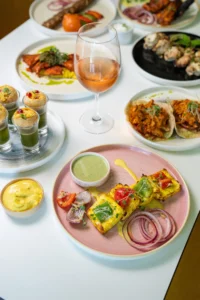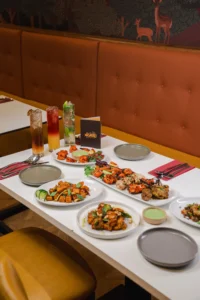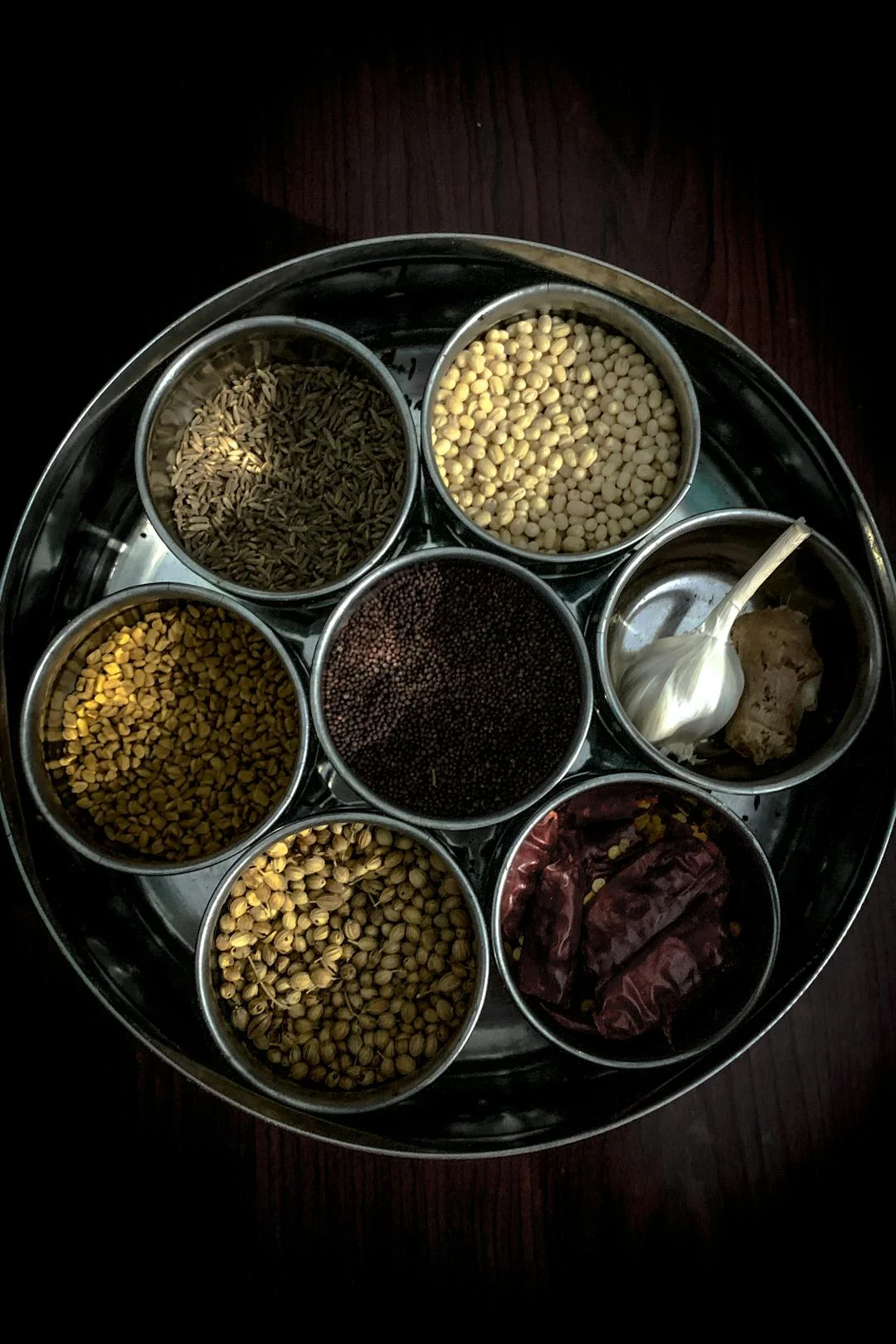Luxury Indian Dining Spaces: Tradition and Elegance
Luxury Indian dining blends culinary tradition with artistic design. Every detail, from copper pots to crystal glassware, tells a story. The dining space sets the stage for flavour, culture, and hospitality. Consequently, interior design plays a crucial role in creating unforgettable experiences.
The Blend of Tradition and Modernity
Indian fine dining spaces celebrate heritage while embracing contemporary style. Designers often mix old-world charm with modern elegance. Copper pots, once central to traditional cooking, now appear as décor elements. They bring warmth, authenticity, and a rustic touch to interiors.
Meanwhile, crystal glassware introduces refinement. Its sparkle complements the rich textures of Indian décor. Together, copper and crystal highlight the balance between history and innovation. Thus, every guest feels connected to the past while enjoying present luxury.
Colours and Textures in Luxury Indian Dining

Warm and Inviting Palettes
Indian restaurants use colour to shape mood. Rich reds, saffron yellows, and deep blues create a welcoming atmosphere. Gold accents enhance the sense of opulence. These colours not only represent tradition but also stimulate appetite.
Natural Textures for Depth
Texture adds soul to fine dining spaces. Moreover, handwoven fabrics, carved wood, and stone surfaces reflect Indian artistry. In addition, designers often use silk cushions, jute mats, and brass lamps. Consequently, these natural textures encourage comfort while showcasing cultural roots.
Lighting That Shapes Experience
Lighting defines how diners feel and interact. Soft, warm lights create intimacy, ideal for private dinners. Chandeliers with crystal details add grandeur to large dining halls. At the same time, lanterns and diyas evoke a sense of nostalgia.
Modern designers now blend LED features with traditional fixtures. This combination ensures energy efficiency while preserving cultural aesthetics. As a result, lighting becomes both functional and artistic.
Tableware and Utensils for Luxury Indian Dining
Copper and Brass for Authenticity
Copper and brass utensils once served practical cooking needs. Today, they return as centrepieces in a dining presentation. Serving curries in copper bowls enhances flavour and creates authenticity. Guests instantly associate these metals with Indian kitchens.
Crystal and Porcelain for Elegance
On the other hand, crystal glassware and fine porcelain plates elevate dining luxury. They complement delicate Indian dishes, such as kebabs and desserts. Their clarity and shine enhance visual appeal and sophistication. Thus, tableware bridges tradition and refinement in every course.
Spatial Layouts that Encourage Connection
Indian dining often focuses on shared meals. Consequently, layouts prioritise large tables and comfortable seating. Moreover, round tables encourage conversation, while banquettes allow intimacy. Similarly, designers avoid clutter to ensure a calm environment.
Open kitchens have also gained popularity. Guests can watch chefs prepare curries, breads, and grills. This transparency builds trust and excitement. It also connects diners with the artistry behind every dish.
Artwork and Décor as Storytellers

Murals and Hand-painted Walls
Many fine dining spaces use murals to share cultural stories. Hand-painted walls often depict festivals, landscapes, and historic tales. These visuals remind diners of India’s diversity.
Sculptures and Artefacts
Decorative artefacts add depth to interiors. Sculptures of deities, miniature figurines, or tribal art pieces enhance cultural authenticity. Every piece acts as a bridge between food and tradition.
Music and Scent in Luxury Indian Dining
A dining experience extends beyond sight. Soft classical music, like sitar or tabla rhythms, adds calm. Fragrances of sandalwood or jasmine create sensory layers. These subtle details strengthen the atmosphere and memory.
Sustainability in Modern Indian Dining Design
Contemporary designers embrace sustainability. Furthermore, many restaurants now use reclaimed wood, recycled fabrics, and eco-friendly paints. In addition, copper utensils last long and reduce waste. Likewise, locally sourced décor also supports artisans and communities.
This eco-conscious approach ensures elegance without harming the environment. Therefore, guests enjoy fine dining with a sense of responsibility.
Global Influence on Luxury Indian Dining Spaces
Indian dining design now reflects global luxury trends. Marble tabletops, minimalist lines, and international lighting styles often merge with traditional décor. However, designers maintain cultural essence through materials, patterns, and art.
This blend appeals to global audiences who seek authenticity alongside sophistication. As Indian cuisine gains recognition worldwide, design adapts to match its prestige.
Conclusion
The design of fine Indian dining spaces goes beyond furniture and colour. Moreover, it weaves tradition, luxury, and storytelling into one seamless experience. From copper pots symbolising heritage to crystal glassware signifying refinement, therefore, every element truly matters.
Together, they create spaces where history meets modern hospitality. These restaurants do more than serve food; they transport guests into the heart of India’s culture.

